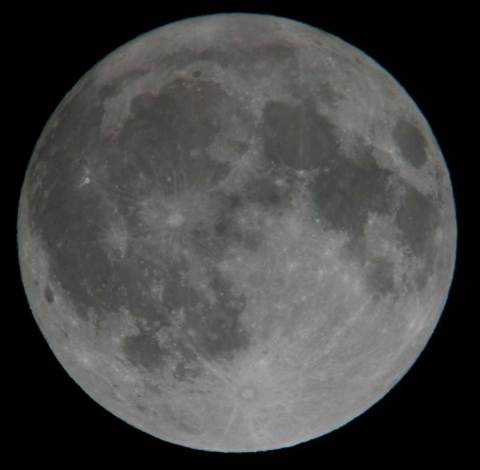Tonight’s moon is the Ice (NeoPagan), Winter (Colonial American), Old (English), Quiet (Celtic), or Wolf (Wiccan) moon. Here in south Florida, with a night-time low of nearly 65°, the only ice I could fine was in my water, and it melted pretty darn fast. But it makes for “easy” imaging, unless you’ve got clouds and haze to deal with. But there’s usually a hole or two through which to shoot, and if you’re patient, you can get a decent image:
Distance from Earth was about 387 400 km, about midway between this month’s perigee (369 882, on the 17th) and apogee (404 579, on the 2nd). In case you’re puzzled about why we’re nearly midway, measured in distance between Earth and Moon, but quite a bit less than midway, measured in days (we’re only 6 days past apogee and perigee isn’t for another 9 days yet), remember your orbital mechanics.
According to Kepler’s laws of orbital motion, a celestial body sweeps out equal areas in its orbit in equal time; the Moon has to move fastest when it’s nearest the Earth, because the line joining Earth and Moon is shortest at that time but it still needs to sweep equal areas in its orbit. When we’re closer to apogee, we can sweep out a large area at a slower pace, because that distance between Earth and Moon is greater.
How does this explain why we’ve got 9 days until apogee and we’re already more than halfway, measured in distance? I’m actually not very sure. I need to go back to celestial mechanics school, I guess.
But at least I got a picture of the moon!


